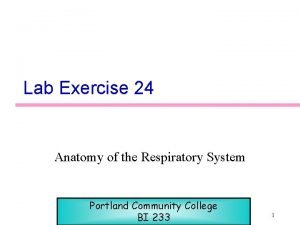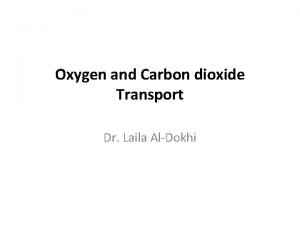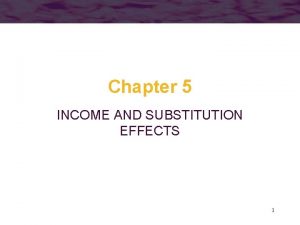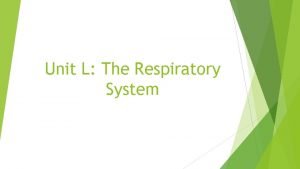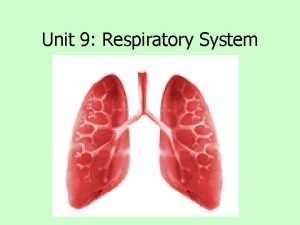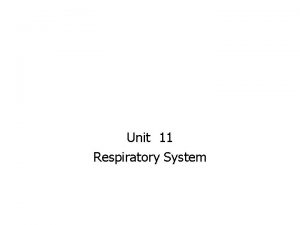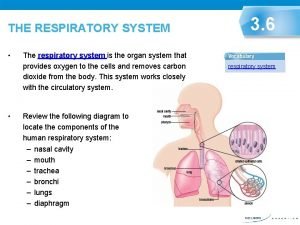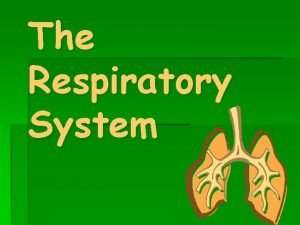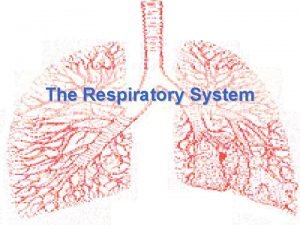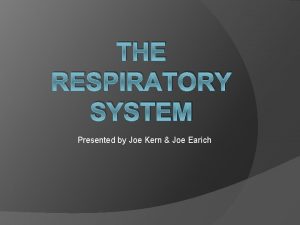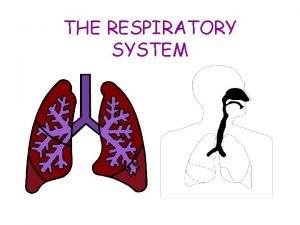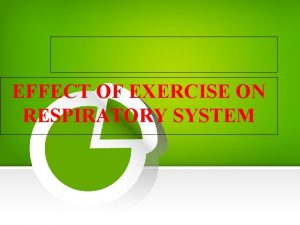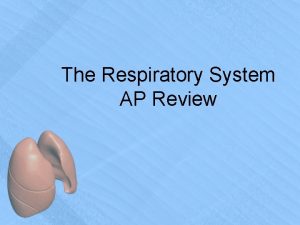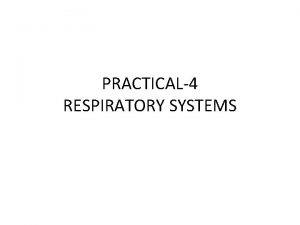EXERCISE EFFECT ON THE RESPIRATORY SYSTEM Exercise is


















- Slides: 18

EXERCISE EFFECT ON THE RESPIRATORY SYSTEM

Exercise is the most influential physiological stress on breathing How is increased ventilation accomplished? Exercise increases the breaths/minute n Exercise increases the amount of air in each breath (tidal volume) n

During light exercise Ventilation increases linearly with oxygen uptake and carbon dioxide production n This increase in ventilation is accomplished more by increased tidal volume (breathing deeper in and out) n

During higher exercise levels Ventilation is increased more by increased breathing frequency n This will keep the blood saturated with oxygen because the blood is in the alveoli capillaries long enough for complete diffusion of gases n

Steady rate (moderate) exercise n n n sufficient oxygen is supplied to muscles due to increased oxygen up take, there is little, or no, build up of lactic acid in the muscles some lactate will be produced and removed by the blood stream lactic acid is neutralized in the blood (this reaction produces carbon dioxide as a byproduct) increased carbon dioxide in the blood will stimulate increased ventilation Increased ventilation is accomplished by both increased tidal volume and frequency

How does pulmonary ventilation (breathing) increase during exercise? 1. During light exercise (walking)? By increasing the tidal volume (breathing deeper) 2. During intense exercise (sprinting)? By increasing the frequency of breathing 3. During steady state exercise (jogging)? By increasing both the tidal volume and the frequency of breathing

IMPORTANT!! It is the oxygen up take of the muscles that does not keep up with the oxygen demand (of muscles) during strenuous exercises – pulmonary ventilation is usually adequate – usually more than adequate.

The Energy Cost of Breathing

At rest and with light exercise n the energy cost of breathing is minimal (4% of energy)

During intense exercise n the energy use may increase from 1020% of total energy expenditure

In a person with respiratory disease n the work of breathing itself during exercise may be exhausting

The Effects of Cigarette Smoking n n n Cigarette smoking has little long term effect on athletes in the initial years Cigarettes have an immediate effect of airway resistance (as much as 3 times) that lasts about 35 minutes after only 15 puffs This could be significant in vigorous exercise

Ventilation Adaptations with Training

Minimal exercise n ventilation during exercise improves with training (due to increased alveolar ventilation and increased tissue oxygen uptake)

Sub-maximal exercise The percentage of energy used in breathing is reduced after training only 4 weeks Tidal volume increases n Breathing frequency is reduced n This results in increased amounts of oxygen extracted from inspired air ¨Untrained expired air contains 18% oxygen ¨Trained expired air contains 14 -15% oxygen n

This is important because n. It reduces the fatiguing of the ventilation musculature n. The freed up oxygen (not used by the respiratory muscles) can be available for the exercising muscle

Specificity of Ventilation Response The improvements in the ventilation were evident only when the athletes performed the specific exercises that they were trained in n New exercises did not show any improved ventilation n Why? ¨It may be, the ventilation adjustments were signaled by neural and chemical changes in the trained muscles n

What is Blood Doping? Blood doping is the practice of boosting the number of red blood cells (RBCs) in the bloodstream in order to enhance athletic performance. n Because RBC’s carry oxygen from the lungs to the muscles, more RBC’s in the blood can improve an athlete’s aerobic capacity and endurance. n
 What is the conducting zone of the respiratory system
What is the conducting zone of the respiratory system Exercise 24 review sheet respiratory system physiology
Exercise 24 review sheet respiratory system physiology Digestive system circulatory system and respiratory system
Digestive system circulatory system and respiratory system How respiratory system work with circulatory system
How respiratory system work with circulatory system Circulatory system and respiratory system work together
Circulatory system and respiratory system work together Bohr effect in respiration
Bohr effect in respiration Bottleneck effect
Bottleneck effect Income effect graph
Income effect graph Bozeman respiratory system
Bozeman respiratory system Unit 9 respiratory system
Unit 9 respiratory system Diagnostic test of respiratory system
Diagnostic test of respiratory system Respiratory system
Respiratory system Larynx respiratory system
Larynx respiratory system Respiratory system coloring page
Respiratory system coloring page Respiratory system purpose
Respiratory system purpose Conclusion for respiratory system
Conclusion for respiratory system Respiratory system jobs
Respiratory system jobs The human respiratory system chapter 7 handout
The human respiratory system chapter 7 handout Chapter 13 the respiratory system
Chapter 13 the respiratory system

